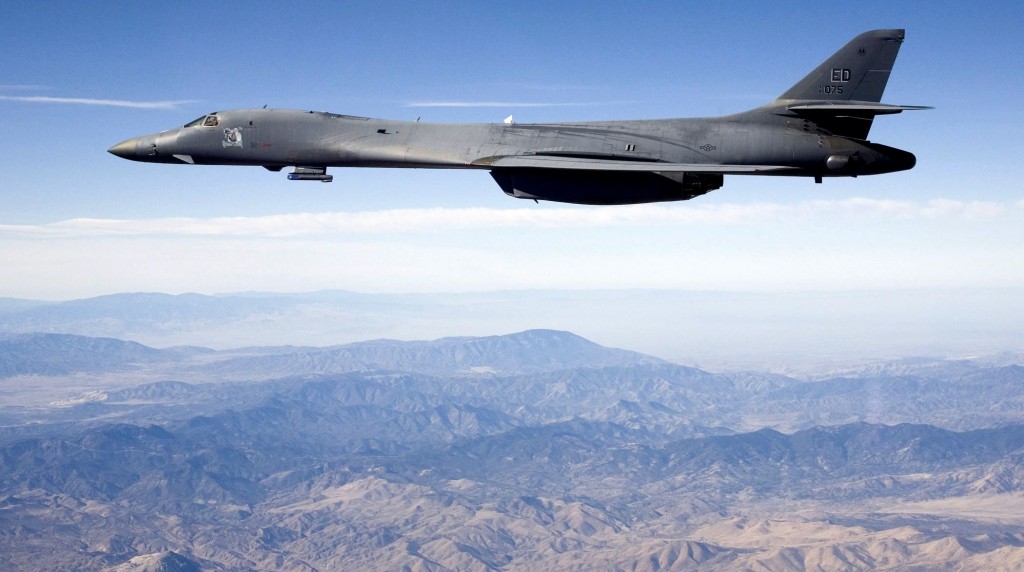Sen. McCain: B-1s Really Do CAS!
Posted on
Congress usually does not like it when the military decides to retire a weapon system. A fleet of planes like the A-10 or the U-2, or ships like Ticonderoga cruisers or, for that matter, a military base are all centers of jobs. And Congress doesn’t like it when someone messes around with existing jobs. When you cancel those jobs they might go somewhere new, maybe to a competing state or district. Or Congress may believe they know better than the military, which is not infrequently true. Perhaps the hottest defense debate on Capitol Hill right now is about the Air Force’s plans to retire the A-10 fleet to save an estimated $3.7 billion. The Air Force argues the plane, which is now pretty much a single mission aircraft, must be replaced, especially since roughly 80 percent of CAS missions are flown by other planes. The issue of retirement was raised during yesterday’s Senate Armed Services Committee hearing on the Commission of the Structure of the Air Force. Here’s what a former B-1 pilot, Jordan Thomas, a nonresident fellow at the Air Force Association’s Mitchell Institute, has to say about Close Air Support, especially to Sen. John McCain of Arizona. The Editor
Senator McCain stopped just short Tuesday of accusing the Air Force of walking away from the Close Air Support (CAS) mission if the service retires the A-10 Warthog fleet. Air Force Chief of Staff Gen. Mark Welsh and Secretary Deborah Lee James told the Senate Armed Services Committee hearing where McCain raised the issue that many other aircraft fill the CAS role, including the B-1B bomber.
McCain clearly did not buy it: “You’re throwing in the B-1 bomber as a close air support weapon to replace the A-10. This is the reason why there is … such incredible skepticism here in the Congress.” The senator apparently didn’t know that the B-1 has been a CAS weapon since 2001. The B-52 has flown CAS missions since 1967. Joint Publication 3-09.3 defines Close Air Support (CAS) as “air action by fixed or rotary-winged aircraft against hostile targets that are close to friendly ground or naval forces, and which requires detailed integration of each air mission with fire and movement of these forces.” So, by definition, CAS is a joint mission and not the purview of any single service or platform.
The idea of a B-1 flying close air support would not comport with Senator McCain’s honorable experience in the military. For the first 10 years of my 23-year career as a B-1 pilot, I would have agreed with the senator.
By then, the A-10 was the go-to aircraft for CAS, even though it was originally designed as a tank killer. Like the B-1, the A-10 was not originally designed for CAS. However, the tragedy of 9/11 blew away everyone’s paradigm of warfighting. Drastic times called for rapid innovation. So, to get the most airpower to protect our ground troops in Afghanistan and Iraq, almost every attack aircraft in the US inventory — the F-15E, F-16, F-18, AH-64, AC-130, RPAs, B-52s and even the B-1B — become close air support assets. Their aircrews received extensive training in the challenging tactics, techniques and procedures demanded by the role of bombing or shooting the enemy as they closed with American troops.
Advancements in technology; changes in training; and updates to CAS procedures were needed. Capabilities such as Global Positioning System (GPS), Joint Direct Attack Munitions (JDAM), targeting pods (e.g., SNIPER and LANTIRN), and satellite communications gave these aircraft the precision to conduct CAS.
Pilot training at the Red Flag war-games and the Air Force’s Weapons School was changed to emphasize CAS TTPs. Traditional CAS procedures were updated to take into account each plane’s capabilities and the needs of those on the ground, the Joint Terminal Air Controllers (JTACs) who are embedded with ground troops. For many of the fixed-wing fighters, this was a relatively easy transition since many squadrons already trained for CAS as an additional mission. But for the B-1, training for CAS was a completely new ball game.
In 2001, the idea that B-1s could operate in a Close Air Support environment was more theory than practice. When B-52s and B-1s were deployed to Diego Garcia to kick off Operation Enduring Freedom (OEF) bomber aircrews had to learn CAS procedures on the fly, working with Special Operations troops embedded with the Northern Alliance. As OEF progressed, the JTACs and bomber crews quickly built the trust both sides needed.
The B-1 and B-52 communities learned from A-10 pilots and met face-to-face with Army Special Forces units and Air Force Special Tactic squadrons. B-1s and B-52s were integrated into the Army’s Air Warrior exercises to improve their skills. By 2003, CAS training for bomber crews had become standard. In 2008, the B-1 was certified to fly with the SNIPER Targeting Pod…similar to the one used by the A-10. Thanks to funding from Congress, this pod greatly increased the B-1 aircrews’ ability to differentiate hostile targets from friendlies and to increase their weapons’ accuracy. B-1s and B-52s now drop laser-guided bombs (LGBs) with fighter-like precision and continue to operate in theater.
As I watched Senator McCain grill General Welsh about which platform would handle the A-10’s CAS mission, I imagined a stack of air power (B-1s, B-52s, F-15Es, F-16s, and F-18s) that was airborne providing Armed Over Watch of our ground troops, ready to answer their call for CAS.
Subscribe to our newsletter
Promotions, new products and sales. Directly to your inbox.

